Unveiling the World's Ugliest Animals
Welcome to our exploration of creatures often topping lists of the "ugliest animals in the world." While beauty is subjective, these animals possess features that many find unconventional, if not outright bizarre. From the deep-sea blobfish, frequently crowned the ugliest animal in the world, to the peculiar naked mole rat, we'll dive into what makes these animals unique. These are not just the ugliest animals; they are marvels of adaptation, each playing a role in their ecosystem. Join us as we uncover fascinating facts about the ugliest creatures in the world and why their appearances are perfectly suited for their survival. Many of these ugliest animals have evolved their distinct looks to thrive in extreme environments or to deter predators.
1. Blobfish (Psychrolutes marcidus) - Poster Child for "Ugliest Animal"
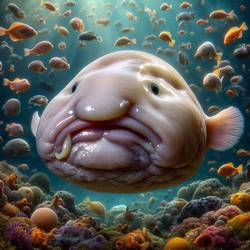
Meet the blobfish (Psychrolutes marcidus), often deemed the world's ugliest animal. This deep-sea dweller lives at depths of up to 4,000 feet (around 1,200 meters). It can reach up to 12 inches (30 cm) in length and weighs around 20 pounds (9 kg). Its gelatinous body, which lacks significant muscle, is an adaptation that helps it withstand extreme pressures and float with minimal energy expenditure. The blobfish's iconic "ugly" appearance is primarily seen when it's brought to the surface, as the rapid decompression causes its body to lose shape. In its natural high-pressure environment, it looks more like a typical fish. This makes it a prime example of how context matters when judging ugliest animals.
2. Naked Mole Rat (Heterocephalus glaber) - Unconventionally Adapted
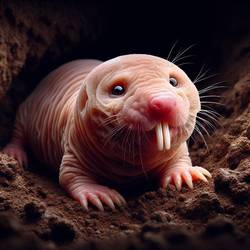
The Naked Mole Rat, weighing about 35 grams (1.2 ounces) and measuring around 3 to 4 inches (8-10 cm) in length, is a fascinating contender for one of the ugliest animals in the world. Found in East Africa, this hairless rodent is known for its wrinkled, pinkish skin and large, protruding teeth used for digging. Despite its unusual appearance, the Naked Mole Rat boasts incredible longevity, often living up to 30 years. They exhibit unique eusocial behaviors, similar to ants and bees, with a queen and workers. Their resistance to cancer and ability to thrive in low-oxygen environments make them scientifically significant, far beyond just being considered an ugliest animal.
3. Aye-Aye (Daubentonia madagascariensis) - Eerily Unique Primate
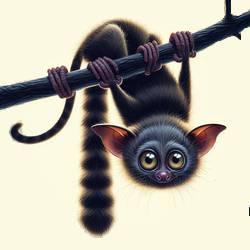
The Aye-Aye, a unique lemur found in Madagascar, measures about 14-17 inches (36-43 cm) in body length, with a bushy tail that adds an extra 22-24 inches (56-61 cm). Weighing around 4 pounds (2 kg), this nocturnal primate is famous for its large, eerie eyes and an exceptionally long, thin middle finger. It uses this specialized digit to tap on wood to find grubs and then extracts them. Its bizarre appearance has unfortunately led to it being considered an ill omen in some local cultures, contributing to its endangered status. For many, it's a strong candidate for the list of ugliest animals in the world.
4. Proboscis Monkey (Nasalis larvatus) - The Nose Knows
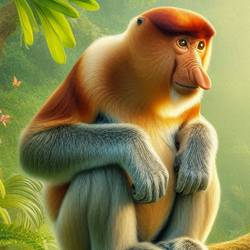
The Proboscis Monkey, native to the rainforests of Borneo, is easily recognizable by its large, fleshy, protruding nose, especially prominent in males. Males can weigh up to 50 pounds (23 kg) and measure about 30 inches (76 cm) in length, not including their impressive 26-inch (66 cm) tail. Their noses can reach up to 7 inches (18 cm) long and are thought to be used to attract females and amplify their calls. These monkeys are excellent swimmers. While "ugly" is subjective, their unique nasal feature certainly makes them stand out among the world's ugliest animals for some observers.
5. Star-Nosed Mole (Condylura cristata) - A Touch of the Bizarre
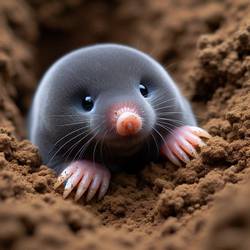
The star-nosed mole is a fascinating creature, easily identified by its unique, star-shaped nose comprised of 22 fleshy, pink appendages. Weighing around 2 ounces (55 grams) and measuring about 7-8 inches (18-20 cm) long, this small mammal is a proficient digger. Found in wet lowland areas of eastern North America, the star-nosed mole uses its extraordinary nose, an incredibly sensitive touch organ, to detect prey like worms and insects with astonishing speed, making it one of the fastest foragers. Its appearance certainly lands it on many lists of ugliest animals.
6. Axolotl (Ambystoma mexicanum) - The Unconventional Salamander
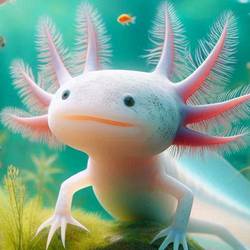
The Axolotl, a fascinating amphibian native to a few lakes and canals in Mexico, boasts remarkable characteristics. With a length averaging between 6 to 18 inches (15-45 cm), it weighs around 60 to 200 grams (2-8 ounces). This unique creature can regenerate lost limbs and exhibits neoteny, meaning it retains its larval features (like external gills) into adulthood. While some find their "smiling" faces and feathery gills endearing, others might place them among the ugliest creatures in the world due to their unconventional appearance compared to other salamanders.
7. Warthog (Phacochoerus africanus) - Ruggedly Appealing or Just Ugly?
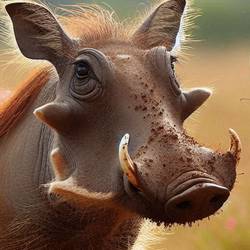
The Warthog, a wild pig found in grassland, savanna, and woodland in Sub-Saharan Africa, is known for its distinctive appearance. With a weight ranging from 60 to 150 kilograms (130-330 lbs) and a height of about 60 to 90 centimeters (24-35 inches) at the shoulder, these robust animals sport impressive tusks (modified canine teeth) that can grow up to 25.5 centimeters (10 inches) long. Their faces are adorned with characteristic "warts" – thick protective pads. These features, while practical, often lead to them being considered one of the ugliest animals.
8. Moray Eel (Muraenidae family) - The Menacing Murene
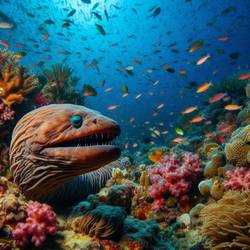
The Moray eel, part of the Muraenidae family, is a fascinating and somewhat fearsome-looking creature found in oceans worldwide, particularly in reefs. These elongated predators can grow up to 13 feet (4 meters) in length and weigh over 60 pounds (27 kg) for the largest species! Despite their intimidating appearance with sharp teeth, serpentine bodies, and often a gaping mouth (which they use to pass water over their gills), they are essential for maintaining marine ecosystems. Their unique, somewhat unsettling look often places them on lists of the ugliest animals in the world.
9. Vulture (Various species) - Nature's Cleanup Crew
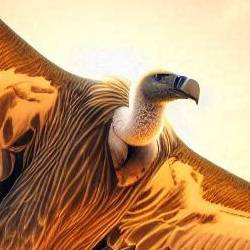
Vultures, with their impressive wingspans reaching up to 10 feet (3 meters) in some species, are powerful flyers capable of soaring to great heights. These majestic birds typically weigh between 4 to 15 pounds (1.8-6.8 kg), depending on the species. Despite their size, vultures are expert scavengers. Their bald heads are an adaptation to keep clean while feeding on carrion. This very feature, while practical, is often what lands them on lists of ugliest animals. Their vital role in ecosystems helps prevent the spread of disease by efficiently disposing of carcasses.
10. Monkfish (Lophius species) - The Deep-Sea Angler
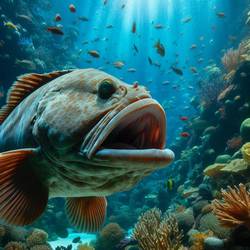
The Monkfish, also known as an anglerfish, is a fascinating and bizarre-looking creature found in deep ocean waters, primarily in the Atlantic. It can reach impressive lengths of up to 4 feet (1.2 meters) and weigh as much as 50 pounds (22.7 kg). With its distinctive appearance, characterized by a massive, wide mouth filled with sharp teeth, a flattened body, and mottled skin for camouflage, the Monkfish is a master ambush predator. It uses a fleshy lure (esca) on its head to attract unsuspecting prey. Its grotesque features undoubtedly make it one of the ugliest animals in the world for many.
Defining the Ugliest Animal in the World: A Matter of Perspective
Defining the ugliest animal in the world is highly subjective and varies based on individual perceptions of beauty and cultural contexts. Generally, an animal might be considered "ugly" due to unconventional physical features that deviate from what is typically perceived as attractive or familiar. These features could include unusual body shapes (like the blobfish), textures (wrinkled skin of the naked mole rat), or facial characteristics (the Aye-Aye's eyes or the Proboscis Monkey's nose).
However, it’s crucial to recognize that these so-called ugliest animals often possess these traits as remarkable adaptations to their specific environments and lifestyles. Their unique appearances, while not traditionally beautiful by human standards, are vital for their survival. Ultimately, the concept of "ugliness" in animals often highlights the incredible diversity of life on Earth and our own biases, rather than any inherent lack of worth in the ugliest creature in the world.
Beyond Their Looks: Fascinating Facts About These Animals
When we think of the ugliest animals, images of the blobfish or naked mole rat might immediately come to mind. But what you might not know about these creatures is that their peculiar appearances often serve fascinating evolutionary purposes. The blobfish's gelatinous body is a perfect adaptation for buoyancy in the crushing pressures of the deep sea, saving energy. The naked mole rat's lack of fur and wrinkled skin are suited to its subterranean, colonial lifestyle, helping with thermoregulation and movement in tight tunnels.
These animals may not win conventional beauty contests, but they play crucial roles in their ecosystems and offer incredible insights for science. The Star-Nosed Mole has one of the most sensitive touch organs in the animal kingdom. The Axolotl can regenerate entire limbs. By studying these ugliest animals in the world, scientists gain valuable knowledge about evolution, adaptation, medicine, and the resilience of life in some of the planet's most extreme environments. So, the next time you see a list of world's ugliest animals, remember there's usually an amazing story of survival behind each one.
Embracing the Unconventional: The Ugliest Animals are Unique Wonders
While these creatures might be labeled among the ugliest animals in the world, their unique forms are a testament to the incredible diversity of life and the power of evolution. Each "ugliest animal" tells a story of survival, specialization, and adaptation in often extreme or challenging environments. Their value extends far beyond human perceptions of beauty, reminding us that every species has its place and its own kind of perfection. Learning about the world's ugliest animal candidates can open our eyes to the true breadth of nature's ingenuity.
